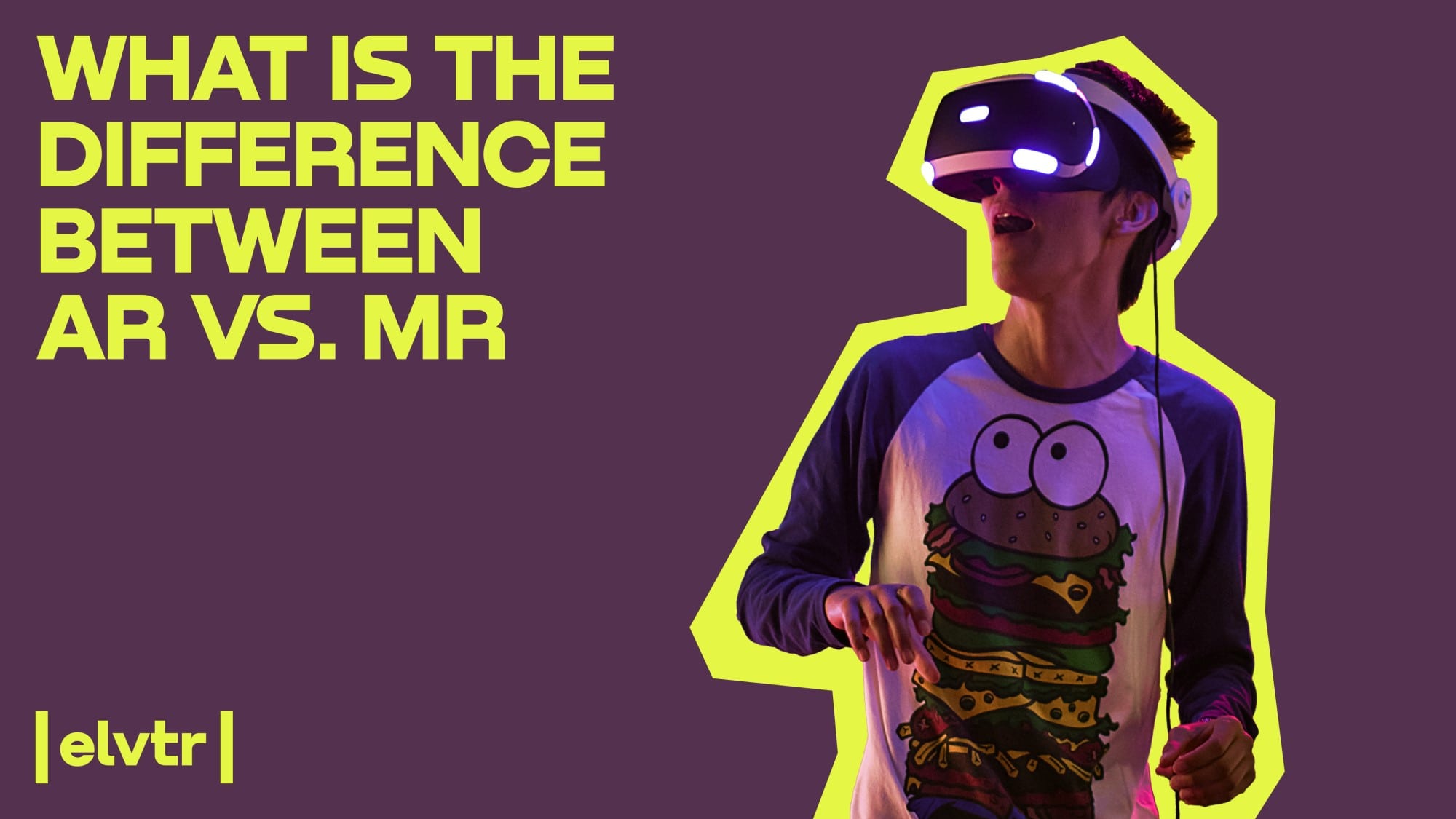- MAIN PAGE
- – elvtr magazine – WHAT IS THE DIFFERENCE BETWEEN AR VS. MR
WHAT IS THE DIFFERENCE BETWEEN AR VS. MR

We’ve been playing with reality for centuries. Art, dreams, optical illusions, and travel are well-known ways to escape reality. From ancient rituals to theatrical performances, humans have always managed to add some spice to their routines. The variety of screens we surround ourselves with is the most common distraction from the real world. Indeed, it doesn’t end there.
Our appetite for novelty and exploration led us to new technologies that helped us immerse in altered realities even further. In this article, we will discuss the difference between augmented reality and mixed reality. Compare, analyze, and choose what’s best for you.
XR - Extended Reality
Let’s discuss XR first. This concept is a blanket term that covers all the immersive technologies you will see later in this article. XR, or extended reality, is any kind of altered reality you might encounter, including AR, MR, and VR.
AR - Augmented reality
AR can add digital elements to the real world, but you cannot interact with them. Sometimes, you have only limited interaction possibilities. Some AR experiences require a headset, but you can also use your phone, tablet, or another gadget for many of them.
The IKEA app is one of the most popular AR experiences. It helps you to choose furniture or other interior elements and see how they fit into your space.
Here is another great example of using AR. HoloAnatomy app helps medical students learn anatomy using Microsoft’s HoloLens.
Augmented reality has already revolutionized entertainment, education, and healthcare. With enough imagination and a practical approach, you can find thousands of ways to implement AR into any human activity.
Take a look at some examples:
- Information overlay: You can point your phone at a historical landmark, building, or painting to discover more about it with information displayed on your screen.
- Navigation: AR can help get around by showing directions and arrows while walking or driving.
- Shopping: With AR, you can try on clothes without going to a store. You can also see how it matches the clothes you already own.
- Education: Instead of using flat images, you can see geometrical problems or study plants and animals in 3D.
- Architecture and design: Planning furniture and decor purchases can be much easier with AR. On a bigger scale, architects can see how their projects combine with the real surroundings.
- Healthcare: AR can show surgeons necessary information while they perform operations or be a part of medical training for young professionals.
- Marketing and brand engagement: AR allows brands to create immersive and interactive campaigns, merging digital and physical experiences to captivate consumers in new and creative ways.
- Art and creativity: Artists can use AR to add dynamic elements to their work or provide information about it.
Recommended courses
MR - Mixed reality
MR uses current reality where you can interact with the virtual elements. Most likely, you will need to wear a headset to interact with digital and real objects simultaneously.
See this video to understand the mixed reality experience:
Have you ever been to Mars? Although flying there will not be possible in the near future, NASA’s OnSight might go public one day. And yes, it is already possible to wander through Mars’s landscapes using MR.
As mixed reality is based on interactions, it provides even more implementation opportunities:
- Virtual collaboration: Group Zoom calls are nice, but the ability to interact with avatars and physical objects can be a great tool for work, education, or entertainment.
- Complex simulations: MR can provide simulations for training scenarios, allowing learners to interact with virtual elements within their real surroundings.
- Design and prototyping: MR allows designers to create and manipulate 3D models in a physical space, making it easier to adjust designs and visualize concepts.
- Maintenance and repair: Even if you are not a pro, you can repair cars, basic home appliances, or anything else with real-time instructions and overlaying arrows.
- Interactive narratives: MR experiences can blend real-world surroundings with digital characters and objects, creating engaging storytelling.
- Industrial applications: MR can assist in manufacturing by providing workers with real-time data and instructions while they work on assembly lines or complex machinery.
- Historical and cultural exploration: MR can recreate historical sites or artifacts, allowing researchers and the public to experience them in their original context.
- Modern art: With MR, you can take part in immersive art experiences that go beyond usual exhibitions.
The Potential of AR and MR
The potential of AR and MR extends far beyond entertainment. These technologies are catalysts for innovation, changing how we learn, work, communicate, and engage with our environment.
The XR market size reached $29.26 billion in 2022 and is predicted to rise to over $100 billion by 2026. And it’s not just numbers. Market growth always means that there will be more career opportunities and projects to choose from.
When you have a vision, potential has no limit. With enough expertise, creativity, and passion, you can create immersive experiences nobody has ever imagined. These technologies empower you to reimagine norms, transform industries, and paint the canvas of the future.
As you step into your own professional journey, let your curiosity be your guiding star. You hold the power to elevate experiences, redefine industries, and open new doors in front of yourself.

